All About Aquarium Water pH. Aquarium water pH (written with a capital H) is a very important aspect of aquarium maintenance. This is because either a high or low pH can directly impact the life of your fish. So, this is a very basic know-how that you need to have if you are either planning to, or already have an aquarium. This blog will give you information on what pH is, how you can maintain your pH and what are the different ways in which pH can be maintained.
What Is Aquarium Water PH?
What is pH? The term pH stands for “power/potential of hydrogen” and is a measure of how acidic or alkaline your aquarium water is. A lower number means it’s more acidic, while higher numbers indicate it’s more alkaline. A pH level of 7.0 on the scale indicates that the water has a neutral pH, neither acid nor alkaline. A pH level of 0 is totally acidic, while a pH of 14 is completely alkaline. Depending on what type of fish you have or plan to have, the pH will have to be in a range suitable to those fish.
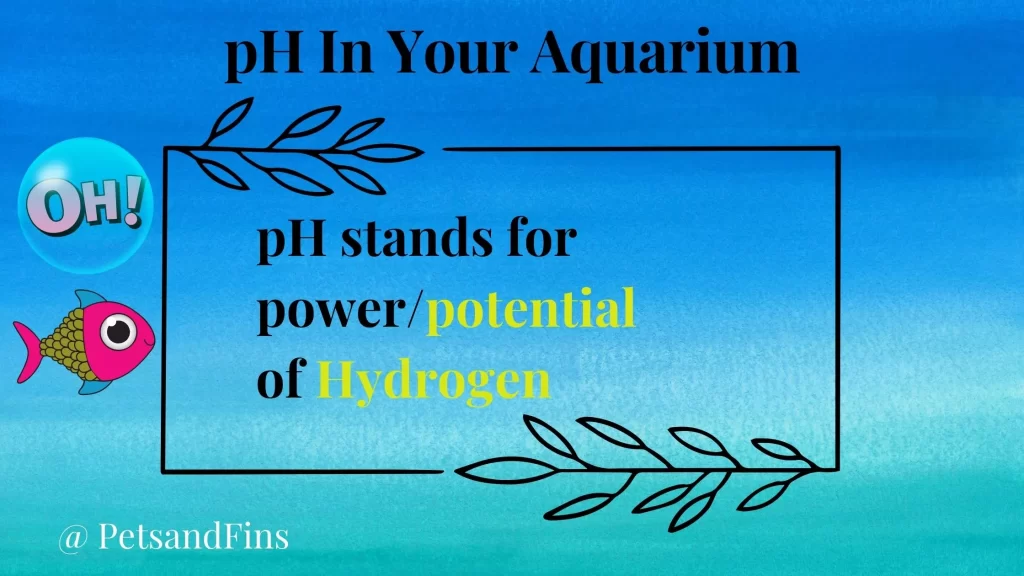
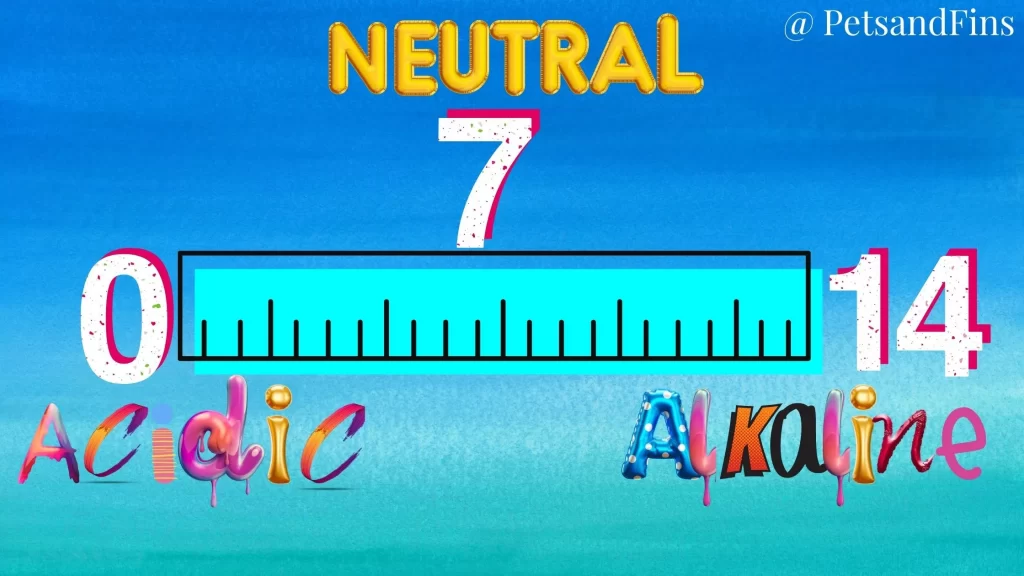
What Should You Know About PH Before You Read Further?
First, you should know that aquarium pH is never the same throughout the day. The pH can vary from morning to noon and again towards the evening. This is more so when you have live plants in your tank. So, when you measure pH make sure you check the time of the day or night when you are measuring the pH.
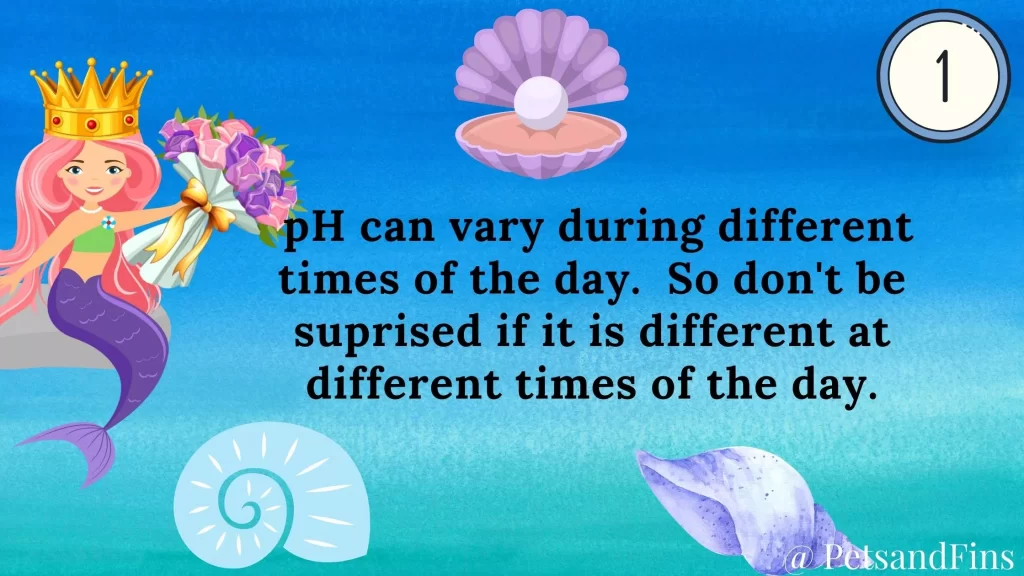
Second, you should know that fish can survive in a range of pH. That is a minor variation in the pH will not kill your fish. For example, if the pH is 7.5, a change to 7.6 will not kill your fish. Similarly, even if it goes down to 7.4 it will not affect your fish so much. As long as the pH remains in the range of 7.4 to 7.6 on a regular basis and your fish are doing well and not showing any symptoms of illness, there is nothing to worry.
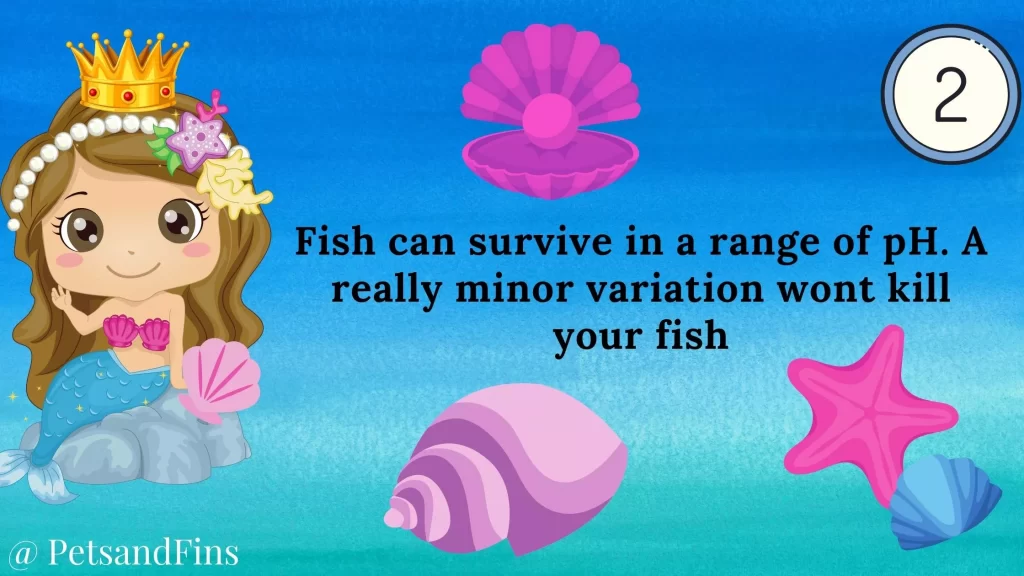
Third, do not try to achieve perfection. Do not try to artificially match your pH to an exact level and try to maintain it exactly at the same level. Your interference with the usage of additives into the water can only do more harm than good to your fish.

Four, when the weather outside is hot and dry, it’s easy to see why humidity can be so low. The evaporation of moisture from trees, plants etc. contributes to atmospheric changes which causes lower relative humidity levels as well. This makes maintaining aquarium water pH much easier once live plants have been introduced that like a slightly more alkaline environment! So, weather does play a role. Remember to check pH when there is a change in weather.
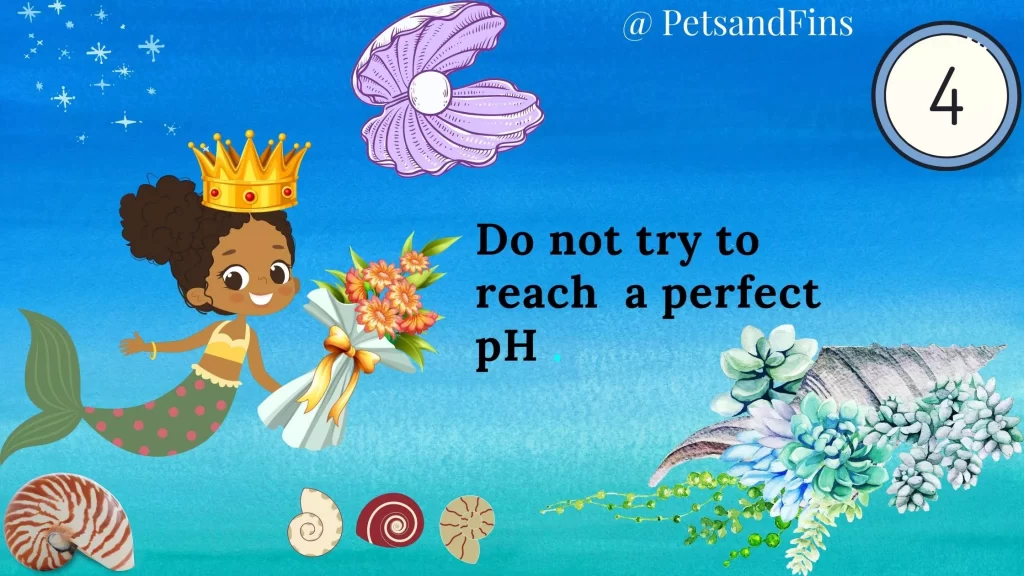
Finally, do not take your own decisions about how you should handle your aquarium water pH. Allow a professional to assist you in this matter since their experience will speak volumes.
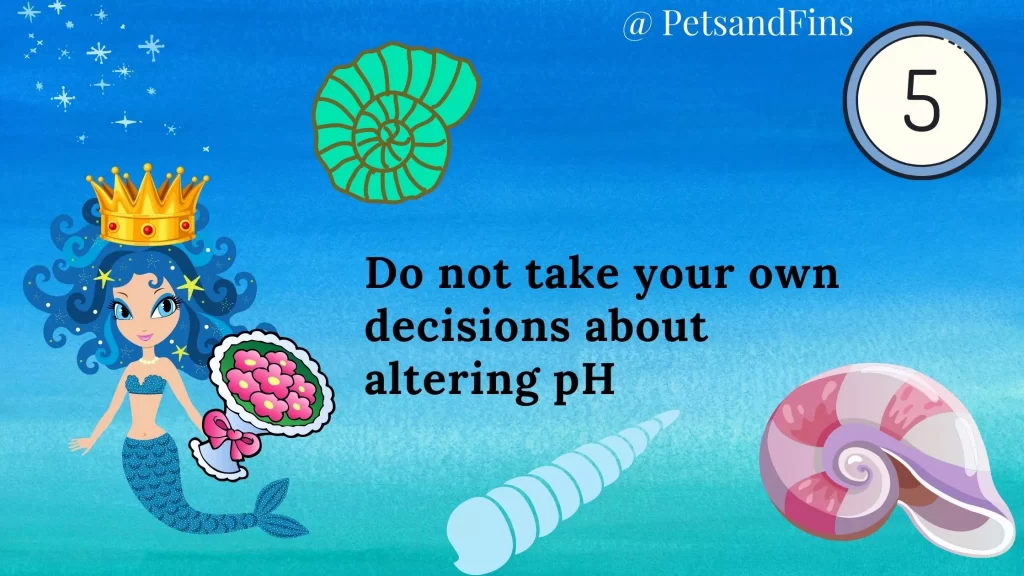
All About Aquarium Water pH – What Causes High PH?
So, what causes PH? Basically, everything you put into your tank will affect it’s Ph balance! That includes food additives, any medications used on your fish, regular tap water changes (which can alter chlorine/chloramine content), overfeeding and decaying organic matter such as uneaten food or plant debris. Even some filter media may add chemicals which change the Ph balance of your tank’s water. These factors all have an effect on your water’s Ph balance.
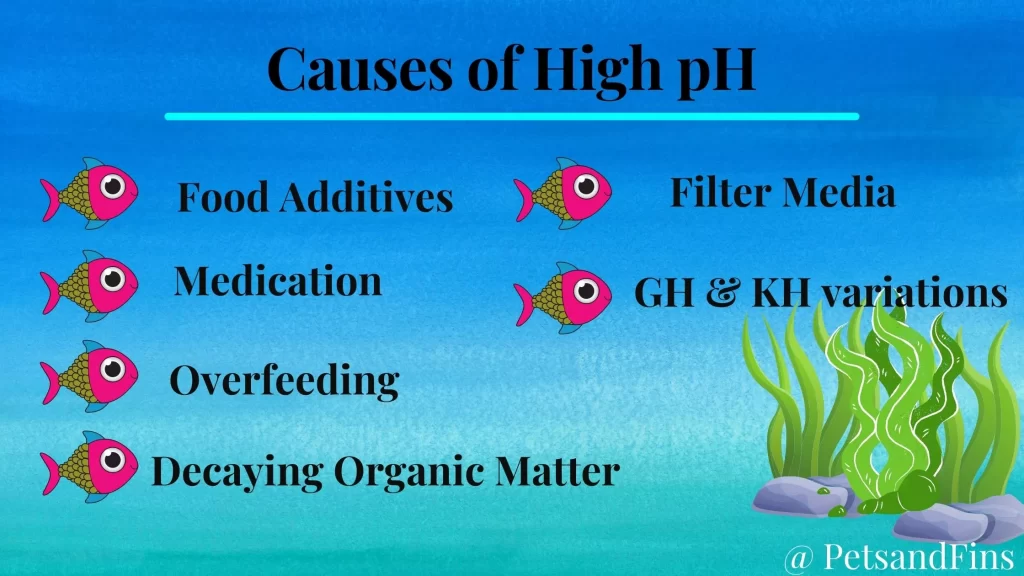
What Causes Low PH?
Low pH can be caused by low CO² levels. Low CO² levels can be caused by high heat and humidity. If you are using reverse osmosis and the water is already soft water low in pH, then that could be another cause. Dissolved carbonates can be another.
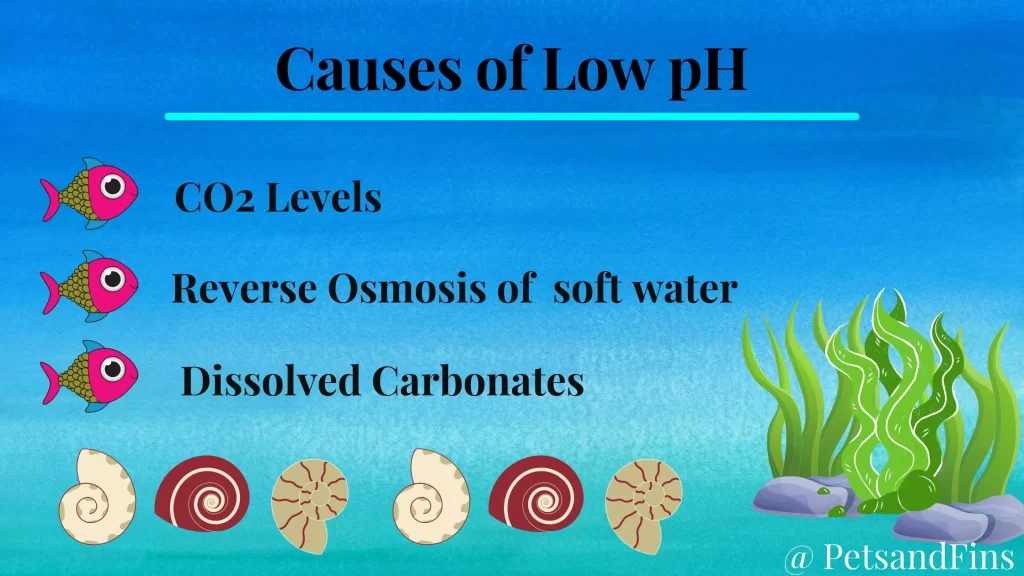
What Happens If Aquarium Water PH Is Very High?
If the aquarium water pH is too high (alkaline), it can damage the skin of the fish and cause tiny holes. These in turn, give scope for infections to develop and even lead to death of the fish. Fish can find it very difficult to breathe. The fins may also suffer damage due to the high pH levels. Even the water filter and mainly the heater can get affected, rather corroded, by it.
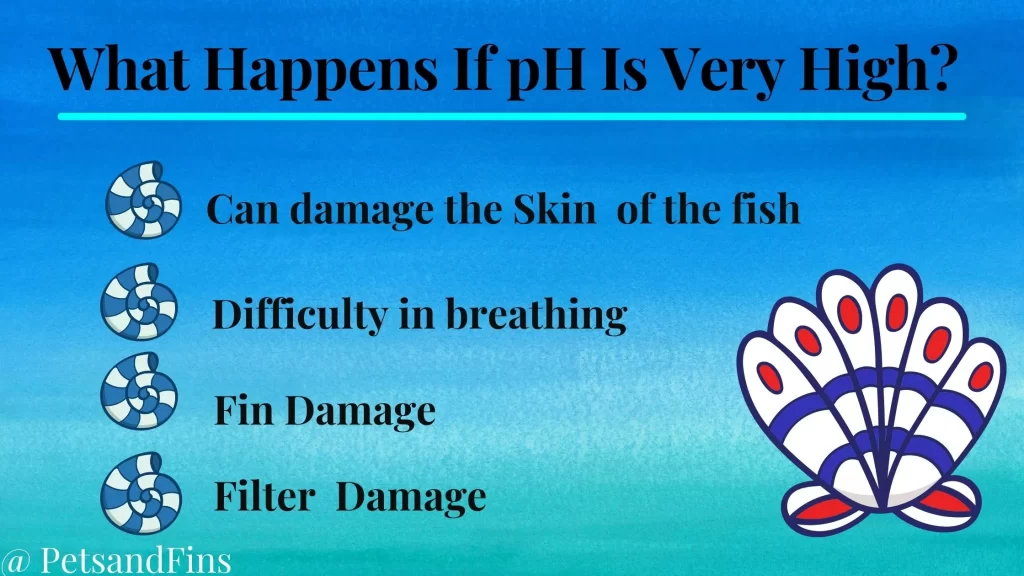
What Happens If Aquarium Water PH Is Very Low?
If pH levels are too low (acidic), they can be just as harmful as high pH. First, it will affect the metabolism of the fish. The gills of the fish are the main target and the growth of the fish can get affected.
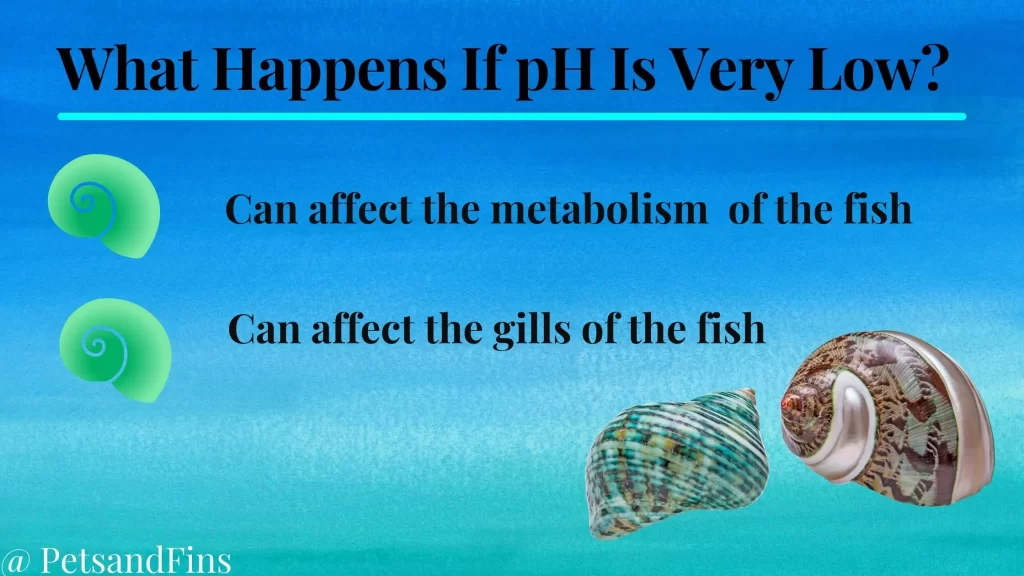
How Does PH Affect Plants?
Most plants can survive in a good range of pH. However, some plants need a lower or higher pH. Higher alkalinity generally provides optimum growing conditions for healthy aquatic plant growth.
Live plants help maintain good levels of pH by absorbing the toxic wastes in the tank. On the contrary dead or rotting plants can lower the pH and cause harm to the entire eco-system in the tank. Despite all these, your focus must be on the type of water that you have, the compatible fish and only then then think of the type of plants you need.
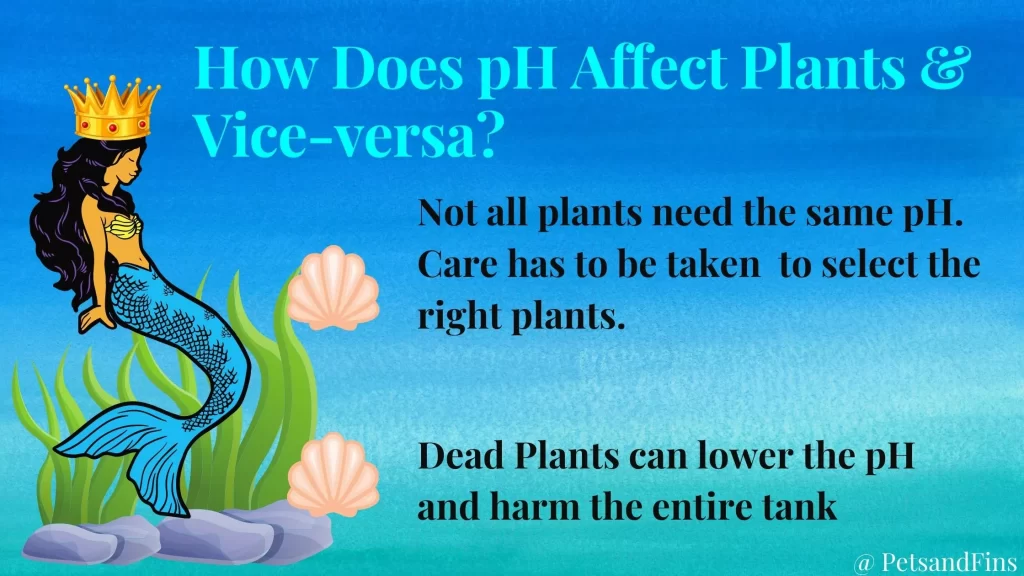
When Should I Test My Aquarium PH?
Ideally checking your pH once or twice a week, is more than sufficient. First it is important for you to know that you will soon reach a phase where you won’t need to keep testing your pH and working on your aquarium pH levels.
After finding right water which keeps all your fish healthy, you wont really need to keep working on your pH. Although you will take time to arrive at the right pH required and to find a way keep a stable source of pH, you finally arrive at a stable setup which you can just go ahead and maintain.
However, do remember, that after you reach that stage where you no longer need help on pH, it is still essential that you check your pH once in a while just to be cautious.

How Do I Test My Tank’s PH?
You should test your tanks PH with fresh samples every time since values may fluctuate daily due to things like light exposure and biological processes taking place within the aquarium.
Once you get an understanding of what these numbers look like for your system, this task becomes easier over time but there are still some key factors that must be kept in mind when testing the waters chemistry such as matching up color scales (pH) vs milliliters (TDS/Salinity). You can use an electronic PH meter, which are available at your local pet store.
Test the pH levels of your water after gravel vacuuming since this is when debris will be stirred up so you need to test it immediately before any chemicals in the substrate have a chance to affect results!
Electronic PH meters are available at local fish stores or online for around $100-$200 dollars. These however are not always the most accurate so if you find yourself in a pinch, do some research on pH test kits which can be bought at local fish stores or online that contain all necessary reagents to bring values into proper ranges using drops!
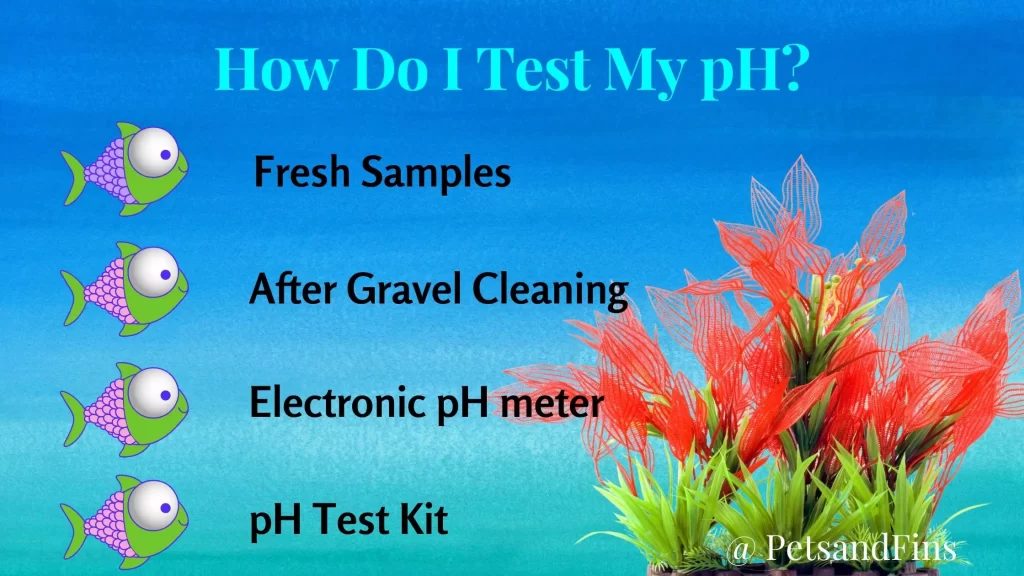
Pro Tip: Remember! Your fish need a stable pH range. So, stability is the key. If you are able to manage stable pH levels, then there is not much to worry about. Do not worry about a minor variation in the pH and remember to test the pH at the same time of the day or night so that you can compare to a similar level. If you compare a morning pH level of the previous week with the night time pH level of the subsequent week, it is but natural that you will find a variation that may alarm you. So, ensure that you record the pH along with the time at which it was taken.
What Are The Ways In Which You Can Maintain Aquarium Water PH?
Water Changes:
A water changes will help maintain your tanks chemical properties such as pH, nitrites/nitrates. You can do a 25-30% water change each week to keep the tank’s chemistry in check especially if you have any fish that need very specific conditions like African rift lake cichlids! The more often you perform these tasks the better since it helps combat dangerous toxins before they become too much for your aquarium inhabitants to handle.
A Conditioner:
The use of a conditioner when changing tap water each week can help stabilize the chemical properties that affect PH in the tank such as chlorine/chloramine content (which deplete alkalinity).
Additives:
You may want to consider using some type of chemical buffer product that helps maintain alkalinity and acidity ratios within their proper ranges for optimal fish health. For most tanks, adding crushed coral or dolomite works well as neither contains toxic heavy metals like many other products on today’s market do! Remember not all corals produce the same results so make sure you do your research before using anything like this! Marine tanks however should not use crushed coral or dolomite since it will make the water even more alkaline raising Ph levels to dangerous heights for fish that originate from very low salt content waters, i.e freshwater fish.
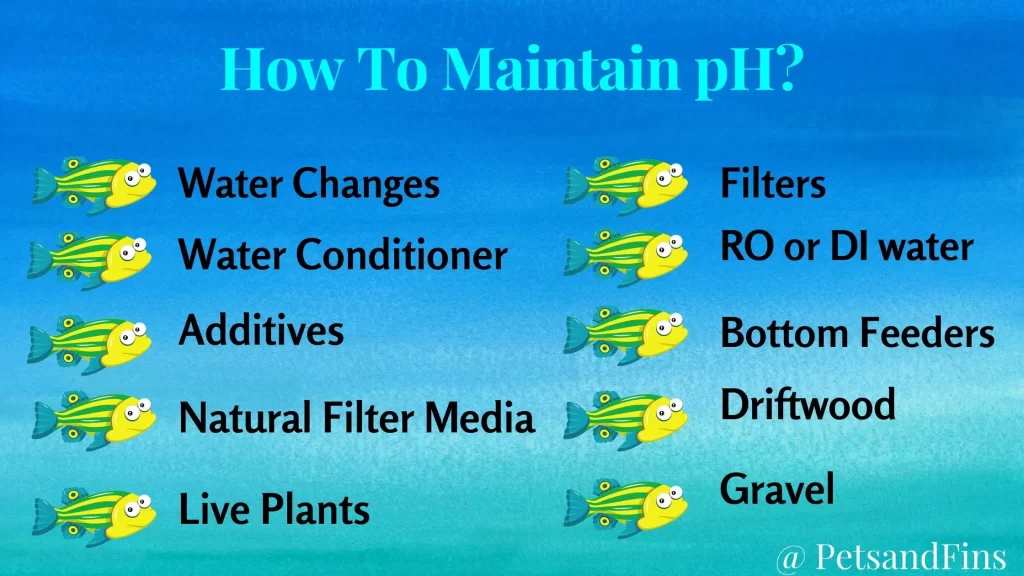
Natural Filter Media:
Marina Shultz Eco Balls natural filter media add minerals back into aquariums after they have been removed by filtration which helps an ideal amount of carbonate hardness (KH) which helps maintain PH.
Live Plants:
Live plants will also help maintain pH levels since they use up certain chemicals that make them grow such as carbon dioxide! This can cause high KH (carbonate hardness) which raises Ph making it more alkaline.
So, a 30% water change along with live plants usually does the trick. This is because plants can continue to raise the pH and the water change will keep it from going to dangerous levels. Although, all this may seem complicated, its just a matter of time when you just maintain a routine and watch your ‘finny fin fins’ grow and give you all the joy.
Filters:
Filter maintenance is another factor that must be kept in mind when trying to maintain aquarium water pH levels.
Make sure your tank’s filter stays properly maintained since these filters house beneficial bacteria colonies responsible for breaking down harmful toxins produced by waste materials present inside the system like Nitrogen compounds! If your filter falls behind, this can also cause your pH levels to get out of whack over time too. So just a little thing can save you a lot of trouble.
Reverse Osmosis:
You can also use reverse osmosis that has been properly set up to create a DIY pH buffer solution for your tank. Reverse osmosis is a process where water is forced through special filters under high pressure to remove ions and other particles leaving you with “pure” H20!
This type of water is free from ions, minerals and trace elements found in tap water so it’s considered the safest way to keep aquarium Ph levels stable without any additives.
If you are using tap water, the chemicals in it will cause fluctuations to aquarium water pH which is why most recommend getting a Reverse Osmosis unit.
Pro Tip: Remember, when you store tap water, the pH goes down over time. So be sure about the pH of the water you are using before delving into something like reverse osmosis which is not something cheap.
Fish:
Fish can definitely help maintain aquarium water pH levels by eating excess food particles that build up over time plus they’ll look pretty cool doing it too! Some fish will eat excess food particles and keep the tank clean by eating them. Among them, bottom feeders such as the sucker fish family do an awesome job in this regard.
Bottom Feeders:
Bottom feeders like Plecos and catfish play a crucial role in maintaining proper pH levels by consuming excess food, decaying plant matter, fish waste among other things which would otherwise drive water chemistry out of balance.
Apart from the filtration system which can only function from a fixed place, bottom feeders move around every possible place in the tank and do their job more effectively. Bristlenose Catfish (Ancistrus spp.), Clown Pleco (Panaque maccus), Sucker Fish, Freshwater – Loaches like the clown loach for example.
These guys love to eat algae and help keep your tank clean! Don’t forget about Nerite Snails too which are great cleaners as well! They also help maintain an acidic environment with some plants you might choose to grow in there.
Driftwood:
Driftwood is a wonderful addition to any aquarium because of its ability to raise pH levels over time. Driftwood releases tannins which maintain the pH and keep harmful bacteria away.
It also provides habitats for small creatures and boosts the immunity of the fish since harmful bacteria do not find it conducive. Personally, I have seen Manzanita driftwood do wonders in my tank. Just make sure you are using driftwood that has been properly pre-soaked or boiled before adding it into your tank since certain woods may be harmful if not appropriately prepared prior to use.
Gravel:
Gravel helps increase the amount of surface area available in an aquarium which can improve gas exchange by making it easier for oxygen present inside the water column mix with carbon dioxide released from biological processes taking place within your system’s environment.
This process known as “aeration” can also help keep aquarium water pH levels at healthy ranges over time. Gravel also encourages the growth of good bacteria and thus maintains a good ecosystem in the aquarium. It also serves as an underwater filter by allowing wastes to settle underneath and allowing bottom feeders to have a feast.
Deionized Water:
Deionized water helps maintain pH levels because there are no ions that can affect the Ph level of your tank. Deionizing is a process involving ion exchange columns or membranes which remove all ions from your tap water before you fill up the aquarium making it much easier to manage PH issues if any at all!
Wrapping Up:
Aquarium water pH is not something that should prevent you from having an aquarium. pH is measured from a range of 0 to 14 with 7 being neutral. A pH between 6.5 to 7.9 is fine as long as your aquarium remains in a select and stable range within these parameters.
For example, if your pH is 7.4, as long as it is stable between 7.2 to 7.6, you shouldn’t be so worried. The main thing is the health of your fish. If your sweet finny buddies are happy, there is no going further. There are several ways to maintain your pH and you will just have to hit the right combination.
My tank works with a canister, live plants and driftwood apart from the normal filters and gravel. Of course, a few suckers, loaches and plecos would be a great addition. So if pH was making you hesitant, then stop here and get yourself an awesome aquarium and try some fish yoga!
Related Questions
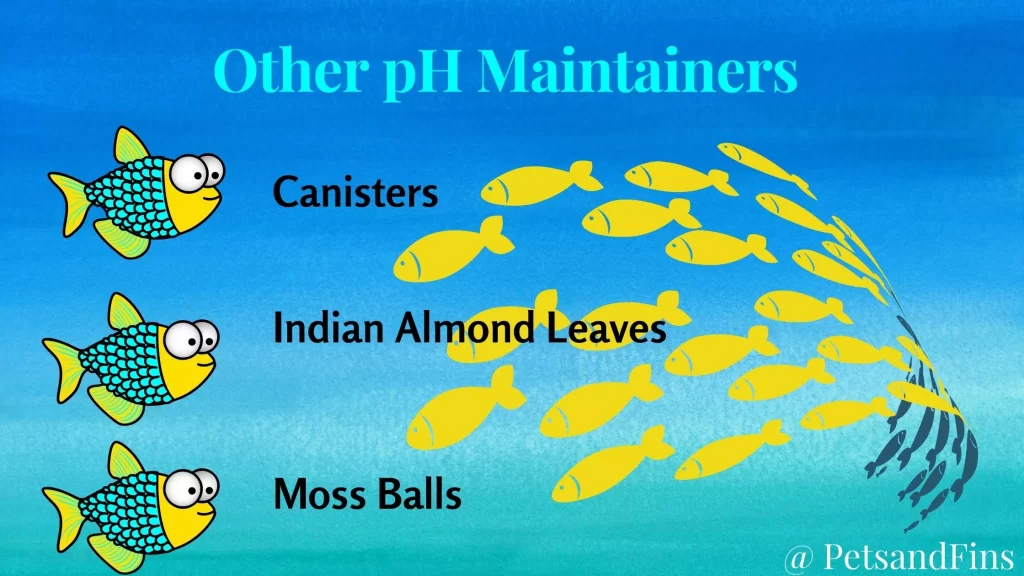
Do Canisters Help Maintain PH?
Canisters and filters are not the same. Aquarium canisters provide excellent filtration for aquarium water and bring down the frequency of the number of times your tank needs to be cleaned. Canister are great additions to any setup since they are super strong filters with many levels of filtrations, thus rendering clean water.
Do Indian Almond Leaves Help Maintain PH?
Indian Almond Leaves help maintaining aquarium water pH levels because they have a chemical compound called tannins which can be used to reduce the Ph of your tank making it easier for more acidic CO² to dissolve into the water from air with lower Ph after being released during respiration etc. This, makes maintaining aquarium water pH much easier once live plants have been introduced that like a slightly more alkaline environment!
Do Moss Balls Help Maintain PH?
Moss balls require least maintenance. They provide a good platform for good bacteria to grow and help maintain pH levels in your tank because they contain tannins which naturally lowers Ph. Marimo moss balls, in specific are not prone to destruction by snails and thus a great addition to your tank. They also don’t produce any dead matter and hence don’t release any toxins into the ecosystem.


